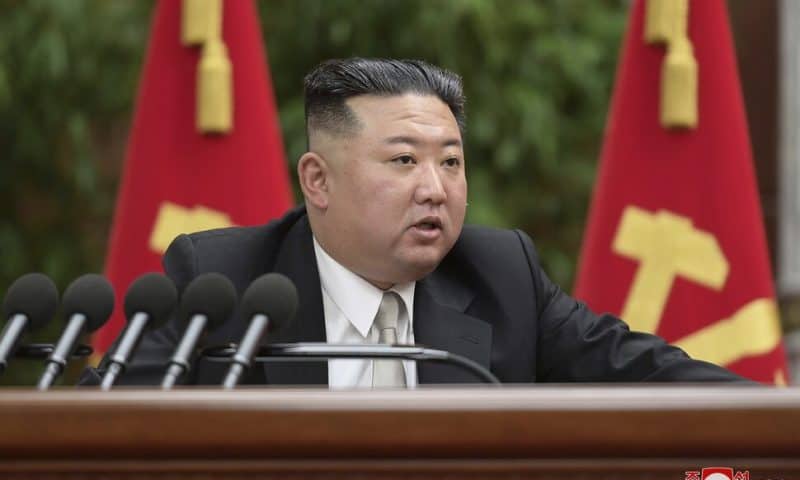Pyongyang’s latest fiery rhetoric signals a clear path toward escalation in the new year.
North Korea on Wednesday signaled that it plans to escalate its weapons development and production – to include potential nuclear tests – at a time it senses weakness from its adversaries in the region.
At the end of a year in which it test fired an unprecedented number of missiles, including those capable of reaching U.S. territory, North Korean leader Kim Jong Un convened a meeting of the Workers’ Party congress during which he disclosed new goals for 2023. He described to the elites in Pyongyang a “newly created challenging situation” on the Korean Peninsula and the need for a new direction in the hermit kingdom’s “anti-enemy struggle.”
As a part of North Korea’s struggle to “protect sovereign rights and defend national interests,” the country’s state news agency reported early Wednesday, “new core goals for strengthening self-defensive capabilities to be strongly pursued in 2023 have been presented in preparation for diverse fluctuations in the political situation.”
Though short on detail, the language represents the clearest indication yet that North Korea plans to accelerate the military buildup it had previously suspended during the Trump administration’s attempts to broker a peace.
The list of new strategic weaponry it plans to develop as a “top priority” over the next five years includes nuclear weapons, as well as a new intercontinental ballistic missile, hypersonic weapons, nuclear-powered submarines and at least one reconnaissance satellite.
Kim’s bold ambitions present new problems for President Joe Biden – whose administration has witnessed the steep degradation of relations with North Korea and a sharp rise in its bellicose behavior with no clear plan to address it – as well as for South Korea.
And the steady march toward more aggressive behavior on both sides of the Korean Peninsula escalated dramatically earlier this week when North Korea successfully launched at least five drones into South Korean airspace.
Analysts believe the mission was highly successful for Pyongyang, not only in its intended purpose of further documenting South Korean defensive positions but also in undermining the public perception of Seoul’s ability to defend itself.
“South Korea’s failure to shoot down the drones will decrease both U.S. military and domestic political confidence in South Korean military forces, and will also embolden North Korea to engage in further escalatory actions,” private intelligence firm RANE concluded in its latest analysis note.
The organization confirmed that South Korea proved unable to defend against any of the drones despite scrambling several attack helicopters and fighter jets and firing at least 100 shots at the invading aircraft, which ultimately returned safely to North Korean territory. It assesses Pyongyang sought to gather further reconnaissance on military targets in South Korea it had previously photographed during a recent satellite test launch, “while also flexing its military prowess.”
South Korea launched its own surveillance drones into the north as a part of its military response. And its leaders have attempted to push back on North Korea’s latest provocations by pointing to their own military capabilities.
South Korean President Yoon Suk Yeol instructed his top officials not to fear North Korea’s provocations because of its nuclear weapons, the Yonhap news agency reported early Wednesday.
“President Yoon told them to punish and retaliate in no uncertain terms in response to any provocation by North Korea, saying that is the most powerful way to deter provocations,” his spokeswoman Kim Eun-hye told reporters. “The president also emphasized that we must not be fearful or hesitant just because North Korea has nuclear weapons.”
The Kim regime has escalated other forms of provocation against the West as well. It has supplied new forms of weapons and ammunition to its partners in the Russian military and allied mercenary organizations to offset Western sanctions and bolster Moscow’s struggling campaign in Ukraine.
Though the Pentagon has not openly confirmed the transactions, it has referenced the reports as a way to criticize Russia’s international isolation.
“It’s just indicative of the fact that Russia finds itself having to deal with countries like Iran and North Korea in terms of replenishing its own stocks,” spokesman Air Force Brig. Gen. Pat Ryder told reporters in November. “Contrast that to what you see with the United States, the international community in Ukraine in terms of the robust defense industrial base that we have at our disposal to support Ukraine in its fight.”

